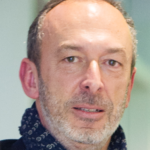Link to HAL – inria-00369642
SPARS'09 - Signal Processing with Adaptive Sparse Structured Representations, Inria Rennes - Bretagne Atlantique, Apr 2009, Saint Malo, France
Compressed Sensing (CS) provides a new framework for signal sampling, exploiting redundancy and sparsity in incoherent bases. For images with homogeneous objects and background, CS provides an optimal reconstruction framework from a set of random projections in the Fourier domain, while constraining bounded variations in the spatial domain. In this paper, we propose a CS-based method to simultaneously acquire and denoise data based on statistical properties of the CS optimality, signal modeling and characteristics of noise reconstruction. Our approach has several advantages over traditional denoising methods, since it can under-sample, recover and denoise images simultaneously. We demonstrate with simulated and practical experiments on fluorescence images that we obtain images with similar or increased SNR even with reduced exposure times. Such results open the gate to new mathematical imaging protocols, offering the opportunity to reduce exposure time along with photo-toxicity and photo-bleaching and assist biological applications relying on fluorescence microscopy.


